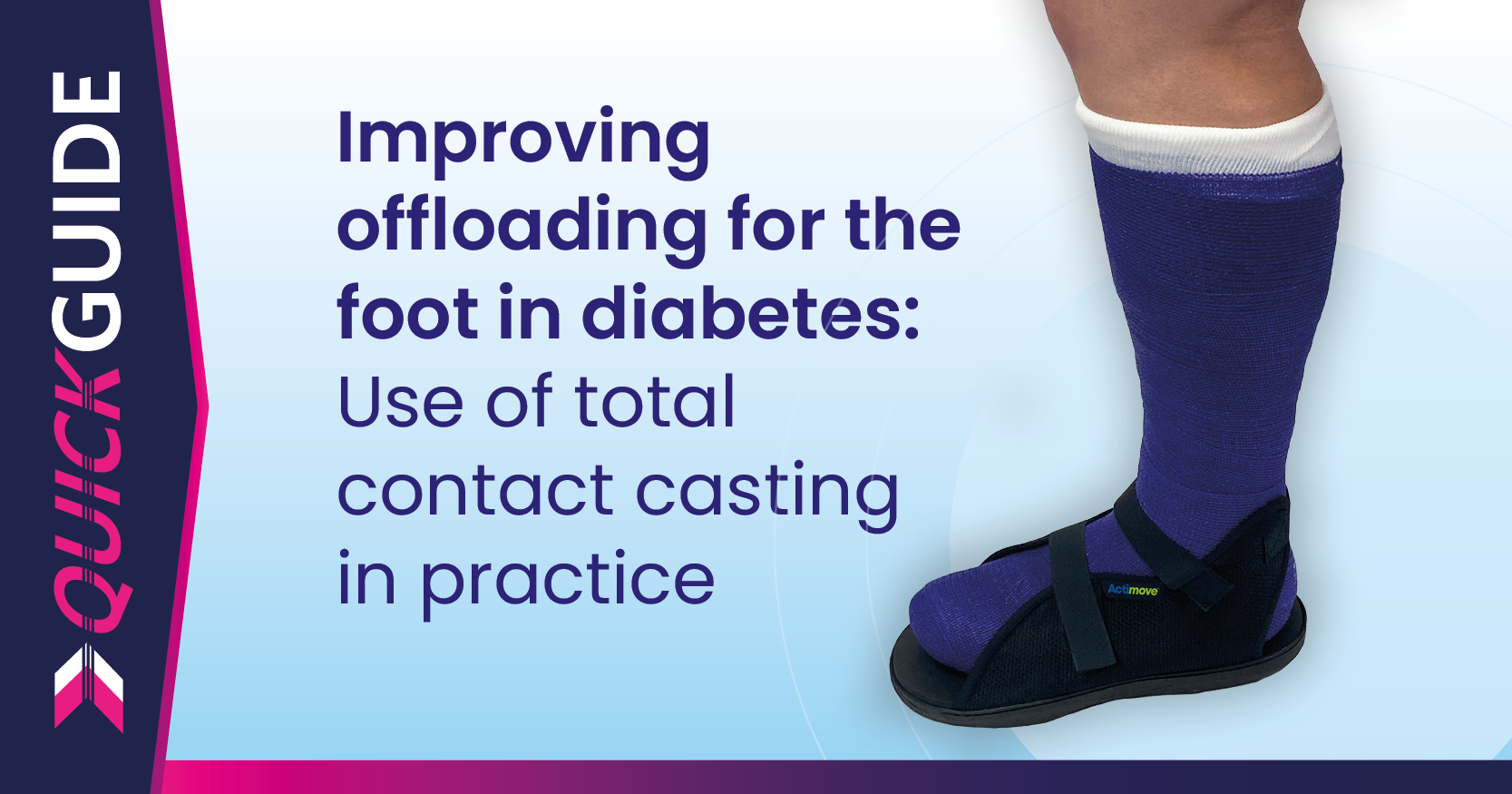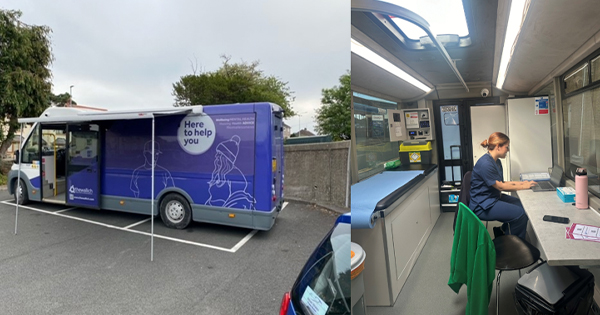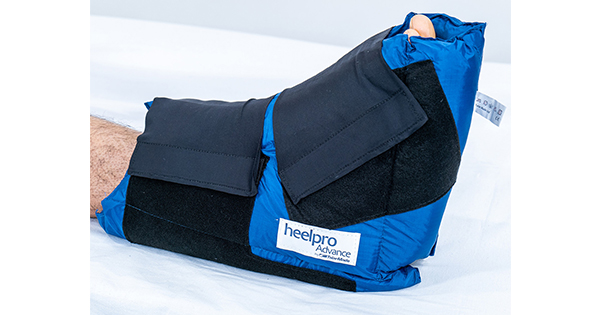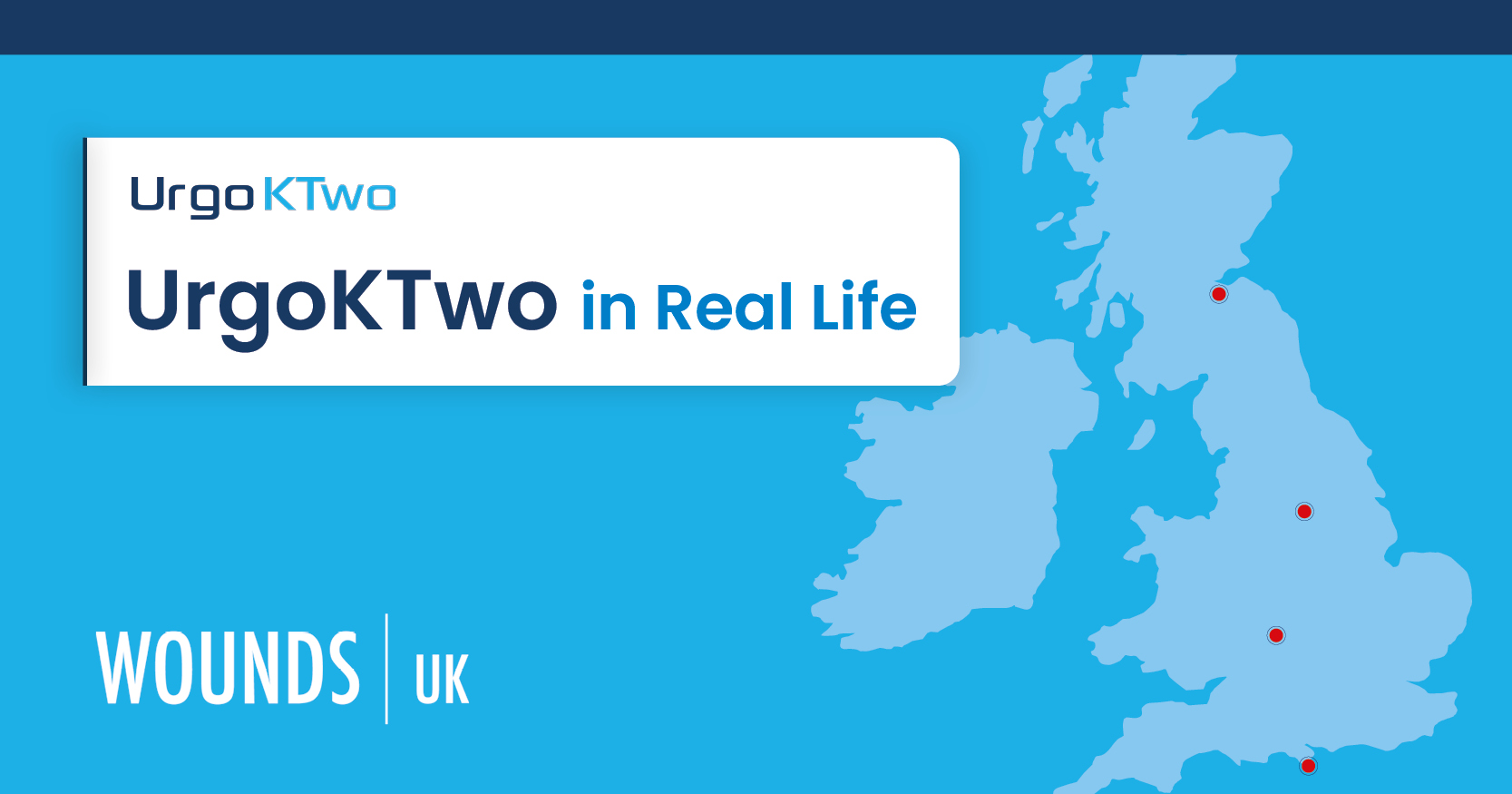In the UK, studies have shown that there are around 450,000 people with diabetes that develop a diabetic foot ulcer (DFU) at some point in their lives, which equates to approximately 10% of those diagnosed with diabetes1. In addition, some 7,000 diabetes-related amputations are performed every year in the UK.
The seriousness of the development of a DFU is starkly expressed by Armstrong et al2, explaining that individuals with lower-extremity complications of diabetes have 5-year mortality rates similar to or worse than most common types of cancer.
DFUs come with a considerable cost. The mean cost of the management of a DFU is £7,800, ranging from £2,140 to £8,800 per healed and unhealed DFU, respectively, and £16,900 per amputated wound3. This translates to an annual NHS cost attributable to managing these DFUs of between £524.6 million and £728.0 million3.
The Principles behind Offloading
Offloading in the management of the diabetes-related foot is “generally understood as relieving pressure from an ulcerated area”5. Optimal offloading will stimulate the healing process and reduce injurious forces at an ulcerated site. A reduction in DFUs will result in a decrease in amputations, so offloading and amputation reduction go hand in glove.
Total contact casting (TCC)
The following definition of TCC comes from the IWGDF 2023 update guidelines6: “Custom made, well-moulded, minimally padded, knee-high non-removable fibreglass* or plaster cast that maintains total contact with the entire plantar surface and lower leg. The cast is often worn with an attachable sole that protects the cast and facilitates walking.” (It should be noted that a cast shoe must be used if a walking cast.)
TCC is the accepted gold standard for the offloading of forefoot and midfoot lesions and there is a body of evidence to support its use, healing between 72% and 100% of ulcers within 5–8 weeks7,8. The latter was a prospective clinical trial involving 63 patients with superficial non-infected, non-ischaemic diabetic plantar foot ulcers, which found that the healing rates in 89.5% of patients treated with TCC compared favourably with those treated with removable cast walkers (RCWs) and half shoe (65.0% and 58.3%, respectively).
The use of WIfI in patient selection for TCC
Use of the WIfI classification was recommended by the National Wound Care Strategy’s vascular guidelines9 to determine the overall degree of limb threat. Williams et al10 found that WIfI stages 1–4 corresponded better with time to healing, with stage 1 having the shortest time and stage 4 having the longest time.
The IWGDF guidelines on offloading foot ulcers in people with diabetes4 are unequivocal that a non-removable knee-high offloading device should be the primary choice of offloading treatment.
Contraindications of TCC
- Severe peripheral arterial disease
- Untreated osteomyelitis
- Infection present
- Extensive necrosis
- Heavily exuding wounds necessitating daily dressing changes.
As with any treatment plan, it is essential to carefully consider patient engagement. Patients must be able to engage with the cast care instructions and attend regularly scheduled appointments for debridement and recasting. As such, the use of a total contact cast may not be deemed appropriate in cases where patients are not actively engaging in their treatment or are exhibiting signs of mental instability. It is of significant importance that verbal and written casts instructions are made available.
Clinical Treatment pathway
A clinical treatment pathway seeks to be as seamless as possible, utilising the full multidisciplinary foot (MDF) team. With a neuropathic ulcer, the patient will be placed into a non-removable cast. The patient will then have a weekly review with the MDF team as and when required, until the ulcer is healed
Download the PDF below to see the full quick guide







